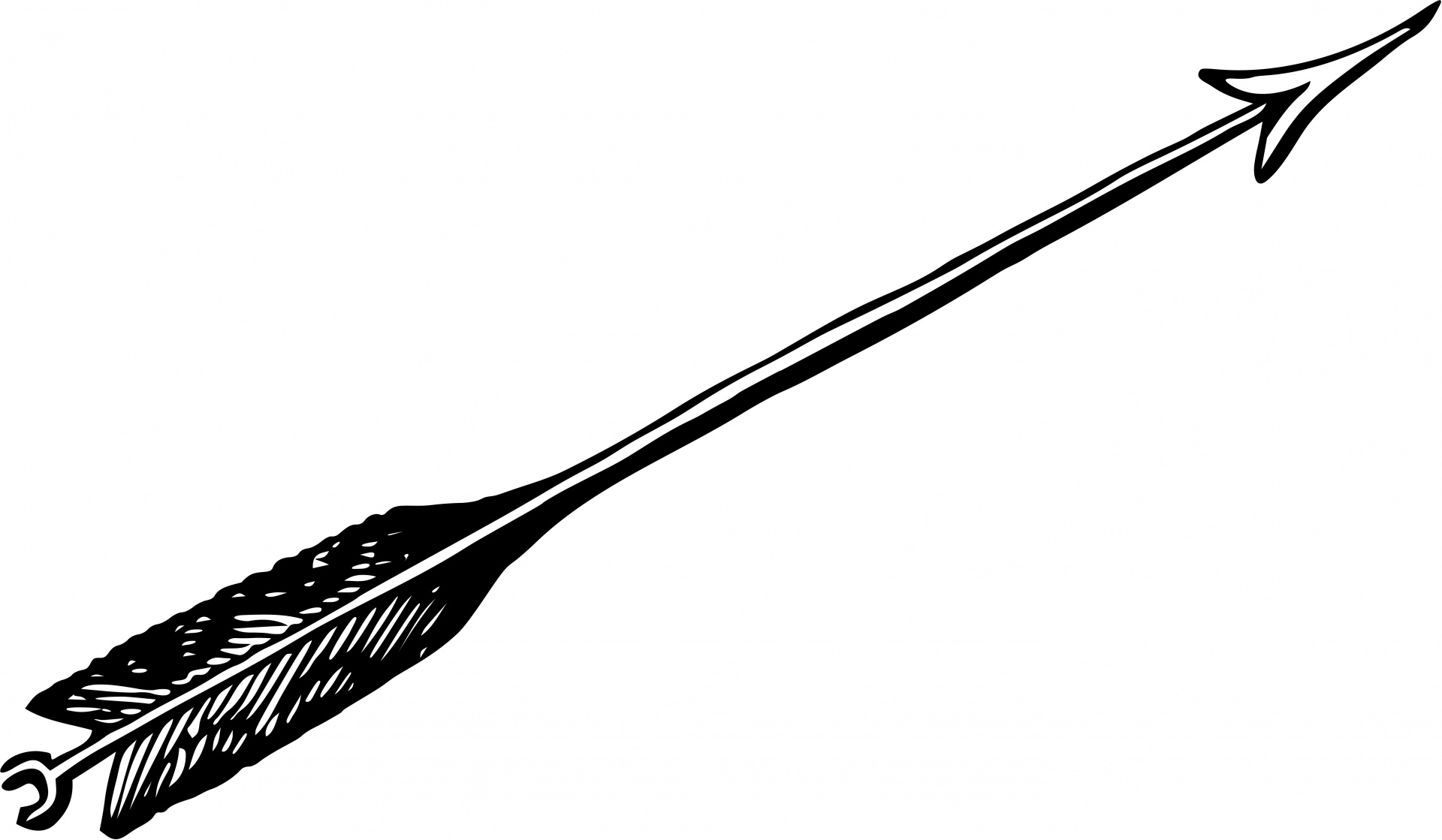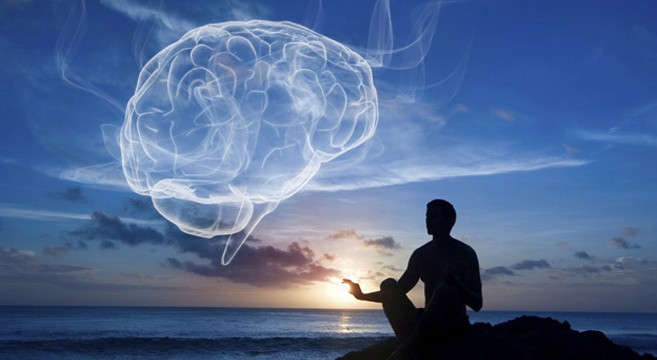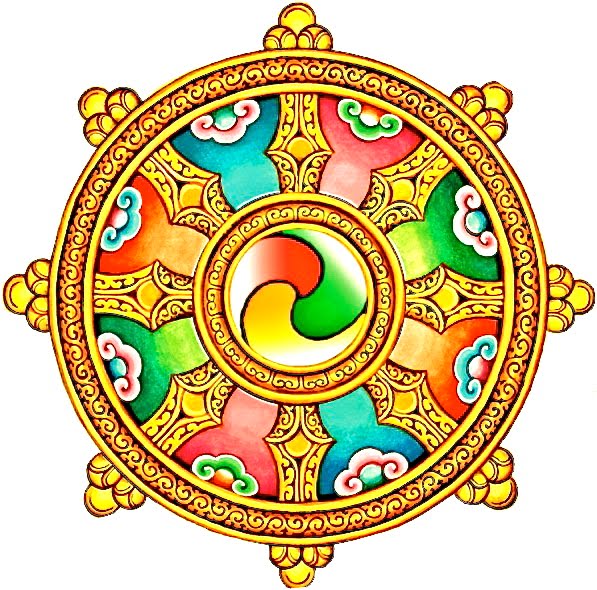The Buddha said he taught
one thing – suffering and its cessation. And he said that it’s
possible to end suffering in this lifetime, that the point of life
isn’t to suffer now and celebrate in the after-life. All of his
teachings – and of the lists and stories and even all of the
thousands of talks and books interpreting his teachings – come down
to this: You don’t have to suffer.
That doesn’t mean that
an enlightened person exists in some kind of bubble where there’s
no pain, no grief, where nothing bad ever happens to them. Because
the Buddha distinguished between pain and suffering. Pain is a
natural and inevitable part of life, he said. Suffering is optional.
It’s obvious what pain
is. Specifically, he said, birth is painful, along with being sick,
growing old and losing capabilities, and death. Not getting what you
want is painful, as is getting what you don’t want.
Suffering, though, is
what we layer on top of pain.
The Buddha told a story
about the distinction. If you’re shot with an arrow, he said,
that’s painful. Then the thoughts that come after that – who shot
me, what was their motive, why me, how can I avenge myself – those
are suffering. That mental activity, he said, is like being shot by a
second arrow because it causes as much stress and discomfort, if not
more, as the actual arrow.
An enlightened person, he
said, still feels the physical pain from the arrow, but that’s it.
An enlightened person doesn’t add suffering to the pain.
The Buddha also taught
that suffering isn’t something we do only in response to being shot
– we do it all the time. It pervades our lives.
You may be familiar with
the Buddha’s first teachings, the Four Noble Truths. The first is
commonly translated as the truth of suffering. Everyone suffers.
For some people, hearing
that is liberating. Buddhist teacher Sharon Salzberg had a difficult
childhood -- both of her parents died when she was young and she went
to live with grandparents who didn't know how to help her process her
grief and confusion. When she took an Asian studies class in college,
she heard the Buddha’s First Noble Truth. She says a light came on for her. “I knew it
to be true. The circumstances of my own life proclaimed it,” she
writes in her book “Faith.”
There's a lot of pressure on
us to be happy. Consumer society runs on our unhappiness and the idea
that
there are things we can acquire that will make us happy. Not
just medications but food, drink, cars, gym memberships, vacations,
credit cards, clothes. The list is endless. Pretty much every
commercial you see is built on our underlying unease or unhappiness
and the desire to find the thing that can make that it go away.
Consider also that our
Declaration of Independence enshrines "the pursuit of happiness," along with life and
liberty, as an inalienable
right. Our nation is founded on the right to pursue happiness. We
have to do it.
That's a lot of weight on
our shoulders.
So if we're unhappy, if
we're suffering, not only are we uncomfortable personally but we are
failures as consumers because we haven't found the right thing to buy
to make us happy and we're traitors to the principles on which our
country was founded.
Talk about stress!
And let's talk about stress.
Because many scholars and teachers now think that "suffering"
was a bad translation of what the Buddha was trying to communicate.
He used the Pali word "Dukkha," which literally refers to
an axle, like on a cart, and how a wheel fits onto it – appropriate
for someone in an agrarian society. So rather than saying that
everyone suffers, with the heavy connotation we may bring to that
word, he was saying that everyone experiences times when things don't
go right, when the wheel doesn't turn smoothly, when existence is
like pushing a shopping cart with a wobbly wheel. Rather than
suffering, a lot of Buddhists now use terms like stress, discomfort,
unease.
One popular characterization
of dukkha is “wanting things to be different than they are.”
Thinking that we’d be happier if … the room were warmer or
colder, the chairs were softer, the speaker was more interesting. ...
That "if" is a sign of the suffering mind speaking up. Or
like the farmer in the reading – My wife is great, but she nags me.
My farm is good, but sometimes it’s not. The “but” brings in
the suffering.
Call it what you will --
suffering, stress, unhappiness, discomfort -- everyone's life has
those moments when things don't go according to plan. The car breaks
down. The friend doesn't call. Someone you love is sick. Or you are.
Someone you love dies. Things aren’t as good as they could be. The
neighbor’s grass is the weed-free green you want for yours.
Life is not always
comfortable. It can't be. The Buddha's First Noble Truth acknowledges
that. But how we respond to that discomfort determines how much we
suffer.
We don’t like to be
uncomfortable. We don’t like pain. That’s a kind of biological
imperative – pain in the body is a sign that something’s wrong.
So when we encounter a painful situation, we try to find a way to
reduce or end the pain or something to distract us from it – and
that’s where we create suffering.
Suffering
is largely a mental experience, although it does manifest in the
body, in the tight shoulders, headaches, ramped-up heartbeats that
come from the stress, anxiety, and depression we can experience. Sam
Harris, the outspoken atheist philosopher, who’s a dedicated
meditator, told
a friend who was going on a silent Buddhist retreat: “Remember,
if you’re suffering, you’re thinking.”
Shinzen Young, a former
Buddhist monk who now teaches a secularized version of Buddhist
teachings, stripped it down to an equation – suffering equals pain
times resistance.
How do we resist pain?
We might get angry when we
feel pain and look for a way to get rid of it by discharging that
energy onto someone or something else. Say you’re walking through
your house in the dark and you step on something, maybe a Lego block
– one of those small, hard, sharp plastic bricks. You’re first
thought is probably ouch. But you might move quickly into …those
darned kids, why can’t they pick up their toys, they’re so lazy,
I ought to go into their rooms and throw Legos all over the floor so
that when the wake up the can see what it feels like! Pain leads to
anger leads to ideas for revenge. Meanwhile, you don’t even notice
that your foot no longer hurts.
We can do that in bigger,
more complicated ways too – being angry at whole groups or people
or societies, creating a climate of hate and fear, threatening wars.
Another way of resisting
pain is to look for something to distract us from it. Advertising is
happy to help here. Feel dissatisfied or lonely or sad? Here’s a
new car or a great beer or a sale on this season’s clothes to make
you feel better. And it might work – for a while. But satisfying
desires doesn’t get rid of the pain. Eating a piece of fine
chocolate makes you happy. But if you continually turn to the
chocolate, you’re creating another problem. The extreme case of
covering over pain by satisfying desires is addiction.
Or you might ignore or deny
the pain. You might convince yourself that everything’s fine, even
when it’s not. To do that, you have to shut off certain parts of
your experience, stop feeling things, and when you do that you’re
closing off other parts of your experience. You feel less pain, but
you also feel less joy. You simply feel less, and you’re boxing
yourself in, putting up walls that shut out life.
Those three – aggression,
passion, and ignorance – were named by the Buddha as the three root
poisons. In another list, they’re three of the five kleshas, or
afflictive emotional states that cause suffering. That list adds
jealousy and pride. You can imagine how those work.
Those reactions become
habits. Anger at someone else distracts us from our own discomfort so
we turn to it again and again. It becomes our default, our way of
responding to the world without even considering whether it’s wise
or appropriate. And when we react in the same way over and over, we
let that define us –we see ourselves as an angry person or a
jealous one, someone who is always craving or someone who’s checked
out and spacey. Under it all, we’re discontented and stressed.
So … if our traditional
ways of reacting to pain aren’t helping to ease the pain but
instead are creating suffering, what can we do instead?
The first step is to
recognize the pain. Just that. See pain as pain, whether it’s
physical, emotional, or mental. Respond to physical pain – pick
your foot up off the Lego, bandage the wound from the arrow – but
do it with compassion and without leaping ahead mentally to who you
can blame for it and whether you can sue them or how much the
doctor’s bill will be and whether that means you won’t be able to
afford a vacation. You can deal with that later. Simply take care of
your pain.
Similarly, with mental or
emotional pain, let it be without elaborating on it. Don’t tell
yourself a story about what caused it and who’s responsible or
worry about when it might reappear. Just sit with it. Thich Nhat Hahn
urges us to welcome suffering, to greet it, by saying, Hello,
suffering. I see you.
This is why Buddhists sit in
meditation, noting thoughts, letting them arise and move on. This
practice is called “Shamata,” a Sanskrit word that means “calm
abiding.” Sometimes it’s more about abiding than calm.
This is from Buddhist nun
Pema Chodron:
Patience has nothing to do with suppression. In fact, it has everything to do with a gentle, honest relationship with yourself. If you wait and don't fuel the rage with your thoughts, you can be very honest about the fact that you long for revenge; nevertheless you keep interrupting the torturous story line and stay with the underlying vulnerability. That frustration, that uneasiness and vulnerability, is nothing solid. And yet it is painful to experience. Still, just wait and be patient with your anguish and with the discomfort of it. This means relaxing with that restless, hot energy—knowing that it’s the only way to find peace for ourselves or the world.
On the night of his
enlightenment, the Buddha sat in meditation under the Bodhi tree and
was met by his nemesis, Mara. You can see Mara as an actual being or
as a mental state. Mara tried to disrupt his calm abiding by sending
armies of archers who shot arrows at the Buddha; he turned the arrows
into flowers. Next Mara sent dancing girls, objects of desire. The
Buddha responded, “I see you, Mara.” He recognized the
temptations were trying to pull him out of his clear, calm state and
didn’t succumb.
The next step is to accept
the pain. Yes, life hurts. Yes, people get sick, loved ones die. Some
days we’re sad or lonely or melancholy. There’s nothing wrong
with that – it is the natural response to the circumstances of
life. Accept that life is not all fun and games, but remember that
sometimes it is. There’s a Zen saying that talks about life as
10,000 joys and 10,000 sorrows. Life contains both – trying to
eliminate sorrow and have only joy is futile.
Note
that what you’re accepting here is your pain and your natural
response. This doesn’t mean that you should accept circumstances
that are causing you pain. Buddhism is not about being a doormat and
allowing others to hurt you – it’s about knowing what’s
happening and choosing how to respond.
Which leads to the next step, investigate the pain. Does it come from external causes and conditions that you can change? Do you need help from someone else to process this? Is it a mental habit – can you change that? If your response to pain is to blame yourself, to see yourself as inadequate – or if someone tells you that you are – is that true? Or are you actually capable? Buddhism calls for a fearless look at ourselves and our reactions to the world with the idea that we can choose how to respond if we are aware of what we’re doing.
Which leads to the next step, investigate the pain. Does it come from external causes and conditions that you can change? Do you need help from someone else to process this? Is it a mental habit – can you change that? If your response to pain is to blame yourself, to see yourself as inadequate – or if someone tells you that you are – is that true? Or are you actually capable? Buddhism calls for a fearless look at ourselves and our reactions to the world with the idea that we can choose how to respond if we are aware of what we’re doing.
Salzberg
says in an
interview with Buddhist publication Lion's Roar that meditation
practice can help us to regard suffering as a way to see more deeply,
to get to know ourselves better, and to discern what really makes us
happy. “Why suffer unnecessarily,” she asks, “if it’s
distorted thinking that’s bringing forth that feeling?” In seeing
our suffering, she says, “we also see that there is always an
intact place within us, an open space of awareness where we can hold
pain with compassion, without becoming overwhelmed or adding to it.”
And while it’s a very
personal process, looking at ourselves and our reactions, this is
what connects us with the world. If our life naturally contains pain,
all lives naturally contain pain. All people hurt; everyone suffers.
My teacher, Lama TsultrimAllione, was born and raised in New Hampshire and went to India where
she was one of the first western women to become a nun in the Tibetan
tradition. She later gave back her vows, married, and had children.
When one of her twins died from Sudden Infant Death Syndrome, in her
grief she began to search out the stories of women in the Tibetan
tradition – they aren’t well known – and went on to build a
lineage focused on the divine feminine. A few years ago, her husband
died suddenly. She says that she got through that horrible first year
of grief only by seeing herself taking on the grief of all those who
had lost loved ones. We’re never alone in our pain, although we
feel like we are – which is one of the ways we multiple it into
suffering.
And when we stop trying to
attain momentary happiness, we become more connected to true
happiness and joy that isn’t dependent on external conditions. The
saying “no mud, no lotus” recognizes that the beautiful lotus
flower, a prominent Buddhist symbol, grows in cesspools. When we’re
willing to see our dirtiest, stickiest pain, we see also our most
beautiful nature, our innate kindness and compassion and joy.
Thich Nhat Hahn is a Vietnamese Buddhist monk who lived through
terrible conditions for many years during the wars there. He writes:
I wouldn’t want to be in a world without any suffering, because then there would be no compassion and understanding either. If you haven’t suffered hunger, you can’t appreciate having something to eat. If you haven’t gone through a war, you don’t know the value of peace. This is why we should not try to run away from one unpleasant thing after another. Holding our suffering, looking deeply into it and transforming it into compassion, we find a way to happiness.With mindfulness, the feelings that have been difficult and painful transform into something beautiful: the wondrous healing balm of understanding and compassion.
















